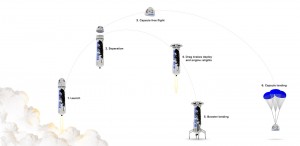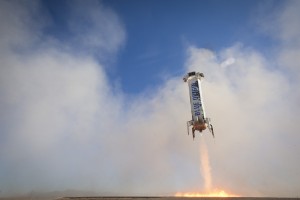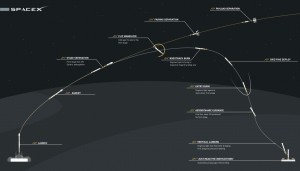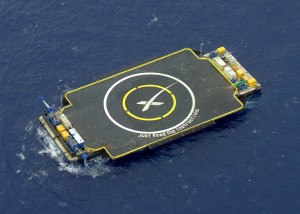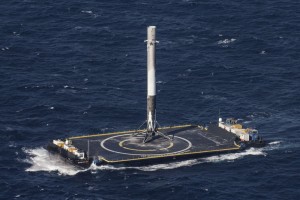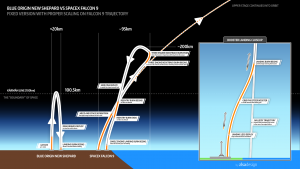Peter Lobner, updated 12 April and 14 May 2019
In my 6 August 2016 post, “Lunar Lander XCHALLENGE and Lunar XPrize are Paving the way for Commercial Lunar Missions,” I reported on the status of the Google Lunar XPrize, which was created in 2007 to “incentivize space entrepreneurs to create a new era of affordable access to the Moon and beyond,” and actually deliver payloads to the Moon. In addition, the lunar payloads were tasked with moving 500 meters (1,640 feet) after landing and transmitting high-definition photos and video back to Earth. Any additional science data would be a plus. In January 2018, after concluding that none of the remaining competitors could meet the extended 31 March 2018 deadline for landing on the Moon, the Google Lunar XPrize competition was cancelled, with the $30M in prizes remaining unclaimed. You can read this post here:
One of the competing Lunar XPrize teams was SpaceIL from Israel, which was developing a small lunar spacecraft named Beresheet (originally named Sparrow), that was designed to hitch a ride into an elliptical Earth orbit as a secondary payload on a SpaceX Falcon 9 commercial launch vehicle and then transfer itself to a lunar orbit and finally land on the Moon.
The SpaceIL lunar landing program continued after cancellation of the Lunar XPrize competition. You’ll find details on the SpaceIL lunar program here:
As completed by SpaceIL and Israel Aerospace Industries (IAI), the Beresheet spacecraft has a launch mass of 600 kg (1,323 pounds) and a landing mass of about 180 kg (397 pounds). The lander carries imagers, a magnetometer, a laser retro-reflector array (LRA) provided by the U.S. National Aeronautics and Space Administration (NASA), and a time capsule of cultural and historical Israeli artifacts.

After landing on the Moon, the Beresheet spacecraft electronic systems are expected to remain operational only for a few days. The original Lunar XPrize plan to demonstrate mobility and move the spacecraft after landing on the Moon has been dropped. The laser retro-reflectors will enable the spacecraft to serve as a fixed geographic reference point on the lunar surface long after the mission ends.While not designed for a long lunar surface mission, Beresheet is intended to demonstrate advances in technology that enable low-cost, privately-funded missions to another body in the solar system. Beresheet was developed and constructed for about $100 million. You’ll find more information on the Beresheet spacecraft here:
Beresheet was launched from Cape Canaveral, FL on 21 Feb 2019 into an initial elliptical Geosynchronous Transfer Orbit (GTO) that was dictated by the requirements for the Falcon 9 booster’s primary payload. Once in GTO, Beresheet used its small rocket engine to gradually raise its orbit to a 400,000 km (248,548 mile) apogee to intersect the Moon’s circular orbit, and phase its orbit so the spacecraft passed close to the Moon and could maneuver into a transfer orbit and be captured by the Moon’s gravity. This mission profile is illustrated below.
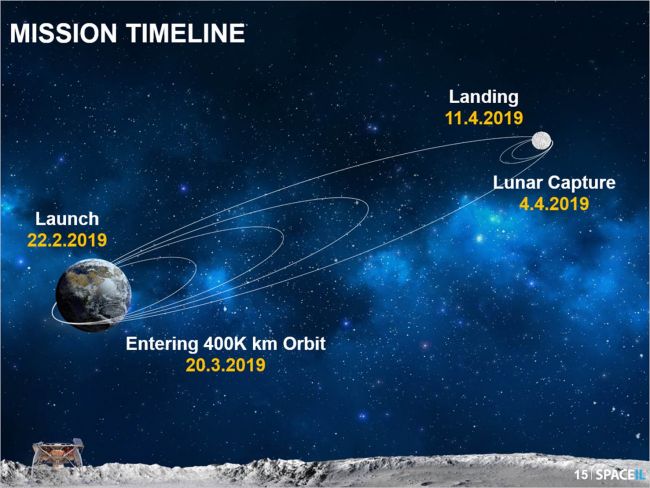
You can watch a short video with an animation of this mission profile here:
On 4 April, SpaceIL tweeted: “Critical lunar orbit capture took place successfully. #Beresheet is now entering an elliptical course around the #moon, as we get closer to the historical landing #11.4″
After circularizing its lunar orbit, Beresheet is scheduled to land on the Moon on 11 April 2019. NASA is providing communications support during the mission.
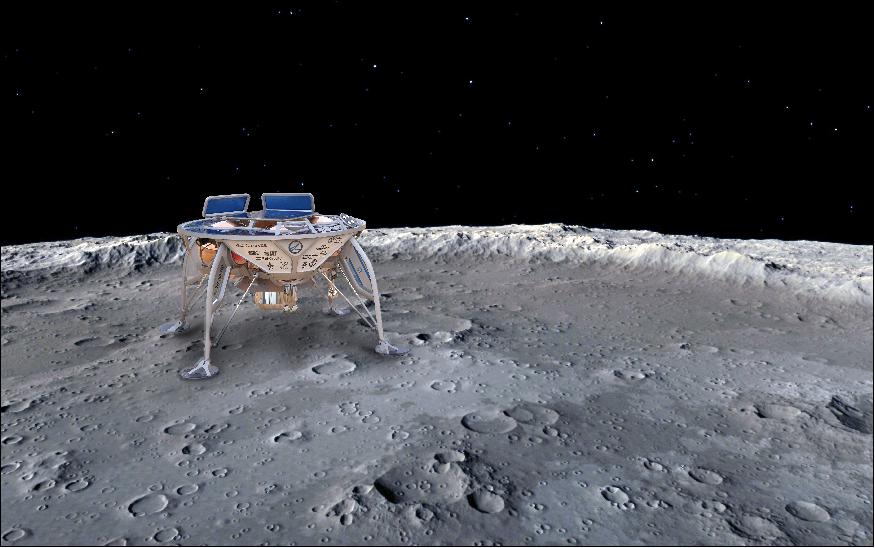
Source: Israel Aerospace Industries(IAI)
On 28 March, the X Prize founder and Executive Chairman Peter Diamand announced that, if the lunar landing is successful, the Foundation would award a $1 million “Moonshot Award” to Beresheet’s builders. Peter Diamand noted, “SpaceIL’s mission represents the democratization of space exploration.”
Best wishes to the SpaceIL team for a successful lunar landing. If successful, Israel will become the 4thnation, after Russia (Soviet Union), USA and China to land spacecraft on the Moon.
Update 12 April 2019: Beresheet spacecraft crashed during Moon landing attempt
The Beresheet spacecraft successfully initiated its descent from lunar orbit on 11 April 2019. Initial telemetry indicated that the landing profile was proceeding as planned.
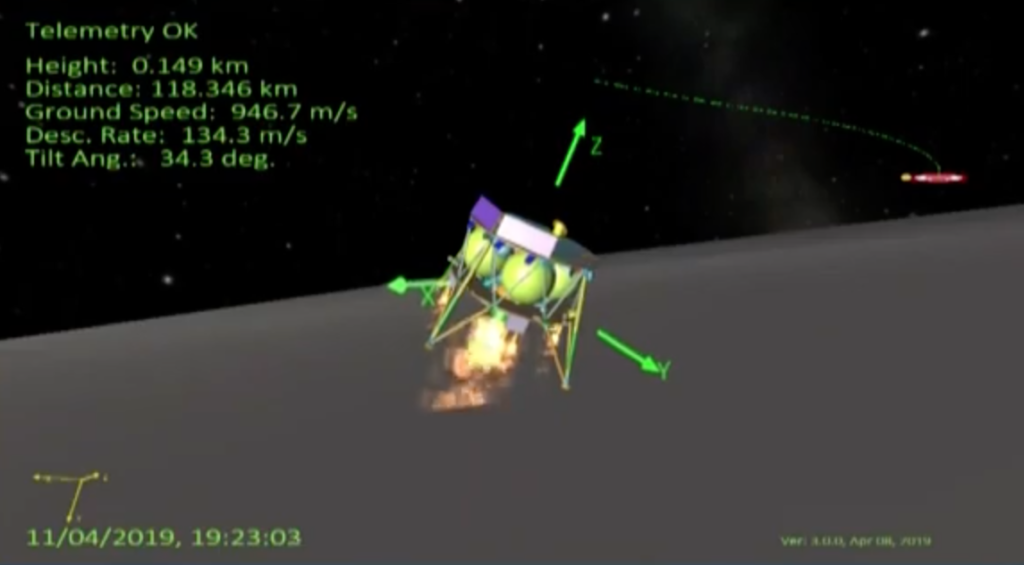
Source: IAI / SpaceIL

Communications with the spacecraft was lost when Beresheet was about 489 feet (149 meters) above the moon’s surface. Opher Doron, the general manager of IAI, reported during the live broadcast, “We had a failure in the spacecraft; we unfortunately have not managed to land successfully.”
X Prize founder and Executive Chairman Peter Diamandis announced that SpaceIL and IAI will receive the $1 million Moonshot Award despite failing to make the planned soft landing on the Moon.
Update 14 May 2019: Preliminary failure analysis
On 17 April 2019, SpaceIL announced that its preliminary failure analysis indicated that a software command uploaded to restart a failed inertial measuring unit (IMU) may have started a sequence of events that ultimately shut down the main engines prematurely during the landing attempt, resulting in the crash of the Beresheet spacecraft.
Morris Kahn, SpaceIL’s primary source of funding, pledged that the team will try again for a Moon landing with a new spacecraft dubbed “Beresheet 2.0,” which will incorporate lessons learned from the first lunar landing attempt.
For more information on the Beresheet mission, see The Planetary Society mission report at the following link:
http://www.planetary.org/explore/space-topics/space-missions/beresheet.html
